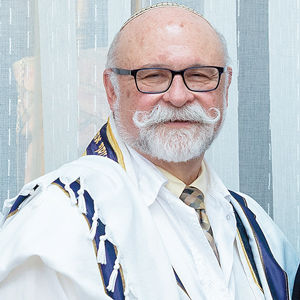Hold on to hope for a post-pandemic world
Published April 23, 2020
Imagine that a disease breaks out in the community, actually a family of diseases, perhaps, because it presents differently in many cases. No one knows exactly how it is transmitted, and no one knows who patient zero is.
Worst of all, no one knows exactly how to treat these diseases. Fear breaks out in the community as people grow more and more anxious that they, too, will become afflicted. So, what is a community to do? What has to be its first line of defense against this mysterious affliction?
Actually, no one has to imagine this scenario at all, as it is all too real right now. Most of the world is feeling anxious, afraid and vulnerable to a disease that presents itself differently in many cases. No one is aware of the identity of patient zero. And while physicians and scientists are working feverishly in search of a vaccine, a cure or a preventative measure that will curtail the rapid spread of this pandemic, at present there are none.
So, what is to be done in the meantime?
For our ancestors, almost any disease was potentially a fatal one, as there were few, if any, treatments. But this week’s double Torah portion Tazria/Metzora offers a glimpse into the medical model by which a disease feared to be communicable was dealt with.
When someone appeared symptomatic of a disease, which they called “Tzara`at,” s/he was taken to a priest who would examine the person and diagnose whether the person was afflicted. If it was determined that the person was a “Metzora,” s/he was instructed to move outside of the camp – in other words, the person was isolated, separated from the rest of the population.
Every week, the priest would check with the patient to determine whether s/he was still ill. A person whose symptoms cleared was invited to return to the camp; otherwise, the person remained separated for another week.
It used to be that one could only imagine what must have been the feelings of one who was separated, how lonely, how isolated, how stigmatized, how frightening it must have been to suffer such social isolation and to have this disease hanging over one’s head.
Today, it is not our imagination but our reality as we practice social distancing, institute self-quarantine measures, and live in a vastly reduced real world. Thankfully, there is a virtual world in which we can continue to be in contact with others, in which we can continue to gather for special occasions, as many did for Passover, for religious services; as many congregations keep their members connected through livesteaming, Facebook Live, Boxcast or Zoom for classes and conversation. At present, there are only guesstimates of when everyone will be allowed back into the real community.
In this new reality, even with the advanced technology of the 21st century, we suffer from the effects of isolation: depression, anxiety, apathy and disorientation, to name but a few. So what is one to do?
The Metzora in this week’s Torah portion always maintained the hope that s/he would be cured and would be allowed back into the camp. Hope is our first line of defense when one is quarantined, whether forcibly or voluntarily. It was hope that kept POWs alive; it was hope that kept Holocaust survivors alive; it is hope that will enable one to maintain life in this environment as well.
In addition to hope is the need to keep a routine, to go to sleep and to awaken at fixed times, to keep a schedule, whether working from home or simply living each day.
As a rabbi, I would include the practice of daily prayer as a means of remaining oriented as to time and identity. It is an opportunity to escape the monotony of life in isolation and to connect with a larger reality than simply oneself. Continue to practice normal hygiene and to get dressed each day. Work on projects that were labeled, “If only I had the time …”
Ideally, a cure for this virus will be found, and slowly it will be possible to reenter the real world once again. However, each person will have changed for this experience, and perhaps even society as we knew it will be transformed. One can only hope that this will be the case, or better, one can work for this to be the case.
Shabbat Shalom!
Rabbi Josef Davidson serves Congregation B’nai Amoona and is a member of the St. Louis Rabbinical and Cantorial Association, which coordinates the weekly d’var Torah for the Light.














